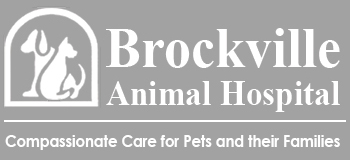Library
-
Wirehaired Pointing Griffons demonstrate love and loyalty to family, making the breed a good companion for active owners. Although calm in the house when given plenty of exercise, the breed has a sense of humor and might drag underwear through the house just as the minister comes calling.
-
Wobbly Hedgehog Syndrome (WHS) is a progressive degenerative neurological disease of African and European hedgehogs. The disease causes muscle atrophy and weakness that eventually progresses to partial or full paralysis of the limbs and torso. The clinical signs, diagnostic testing, and supportive care management of WHS are explained in this handout.
-
As a hairless type, these dogs are good for some allergy sufferers – but meet the dog and find out for sure before you commit. They bond so strongly that they can't be rehomed easily, so you need to be in it for the long-haul.
-
Yeast dermatitis or Malassezia dermatitis is an extremely common skin disease in dogs. Clinical signs include itchiness, redness, scaly or crusty skin, and foul odor. Diagnosis and underlying conditions are discussed. Treatment involves resolving the underlying disorder and using topical and/or oral medications to treat the yeast.
-
The beautiful, feisty Yorkie acts more like a tough terrier than a delicate toy breed. Despite the luxurious, shiny coat, the Yorkie has a working-class attitude, a fondness for chasing small animals, a big-dog bark, and super-sized self-confidence.
-
Pets and people need some zinc in their diets. However, too much zinc can cause serious health problems. The amount of zinc required to cause poisoning depends upon the pet’s size, the form of zinc ingested, and how much was ingested. Some forms of zinc are more readily absorbed than others.
-
Zinc-responsive dermatosis in dogs is a skin condition that results from zinc deficiency in the body. The deficiency can be due to an inability to adequately absorb zinc from the diet (most commonly seen in arctic breeds), zinc binders in dietary supplements, excess calcium (juvenile large breeds) or less commonly, an inadequate amount of zinc in the diet. Clinical signs include crusts and scaling around the eyes, mouth, scrotum and muco-cutaneous junctions. The haircoat can also, be dry and dull. Lethargy, inappetence, and lymphadenopathy may also occur. Diagnosis includes a history and physical exam and a skin biopsy. Treatment may include zinc supplementation, dietary change and ensuring a dog isn’t receiving any supplements that will interfere with zinc absorption.
-
A zoonosis is a disease or infection that can be transmitted from animals to humans. Although cats only pose a mild risk of causing disease in humans, those with immunosuppressive conditions such as HIV or those receiving chemotherapy are at higher risk of becoming ill from these infections. The most common and significant infections that humans can get from their cats include rabies, cat scratch disease, toxoplasmosis, and ringworm. Feline leukemia virus (FeLV) and feline immunodeficiency virus (FIV) are not zoonotic. Hygiene plays an important role in preventing the spread of these diseases, as well as preventive medicine for your cat, including regular deworming and external parasite preventives. Keep your cat indoors to minimize exposure to zoonotic diseases.
-
A zoonosis is a disease or infection that can be transmitted from animals to humans. Although dogs only pose a mild risk of causing disease in humans, those with immunosuppressive conditions such as HIV or those receiving chemotherapy will be at higher risk of becoming ill from these infections. The most common and significant infections that humans can get from their pet dogs include rabies, leptospirosis, ringworm, and gastrointestinal illness such as Salmonella and Campylobacter. Hygiene plays an important role in preventing the spread of these diseases, as well as preventive medicine for your dog, including regular deworming and external parasite preventives.

